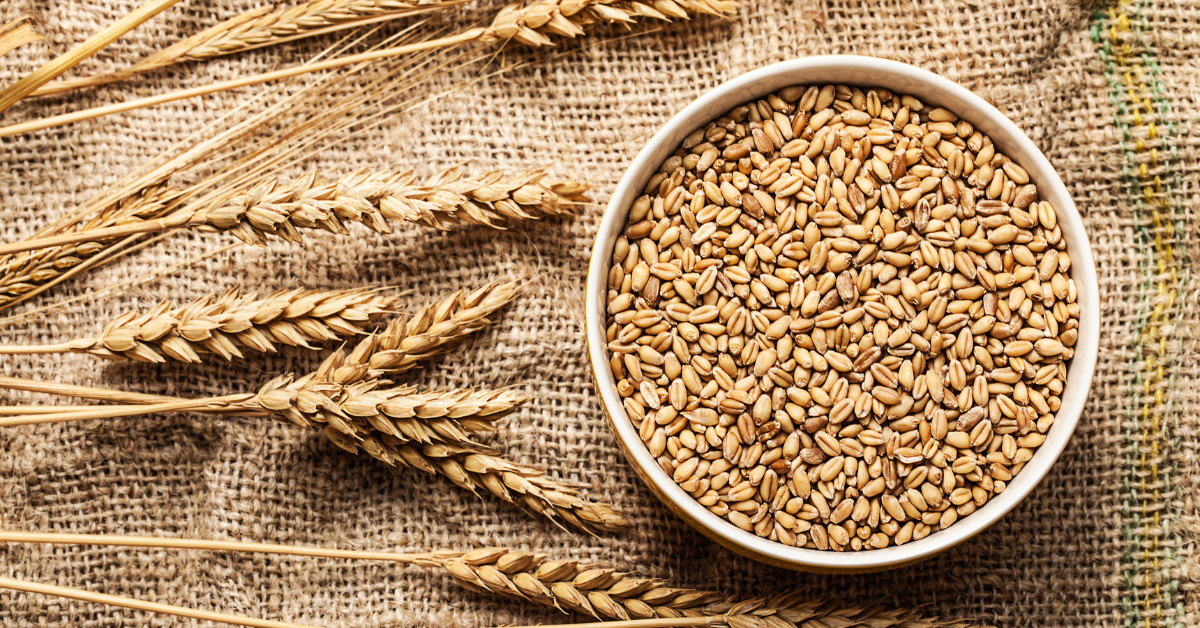Wheat is a key ingredient in many common foods, including bread, pastries, cereals, and pasta. Wheat is a staple in many diets, and is one of the three most commonly grown grains after corn and rice. Although wheat allergies are very common, people who have an allergy to this grain or its related varieties (spelt or emmer) may find it difficult to avoid due to how many foods contain it. But what causes a wheat allergy? Is celiac disease the same as a wheat allergy? In this article we will delve into the topic of wheat allergies and their causes.
What are wheat allergies?
The body’s immune system is designed to fight off invading viruses or bacteria with antibodies. An allergic reaction occurs when the immune system is triggered by something that is not necessarily dangerous to the body, like certain foods, medication, an insect sting, or pollen. The immune system sees these allergens as a threat and produces an immune response to fight them. These reactions can range in severity; while mild reactions involve itchy eyes, runny nose, and a rash, a severe reaction can cause potentially deadly anaphylactic shock.
A wheat allergy is a condition in which certain proteins found in wheat cause an allergic reaction. This leads to a reaction shortly after eating something containing wheat. Reactions can include swelling or a rash, along with a variety of other symptoms associated with a food allergy.
There are three types of wheat allergies:
- Food allergy
- Wheat-related exercise-induced anaphylaxis (WDEIA)
- Baker’s asthma
Food wheat allergy
A food wheat allergy is a condition that affects your skin, gastrointestinal tract, and/or respiratory tract. It is triggered when you consume wheat in any form. A food allergy is the most common type of wheat allergy.
Wheat-Dependent Exercise-Induced Anaphylaxis (WDEIA)
WDEIA is a rare but life-threatening type of wheat allergy. Individuals with this allergy can often ingest wheat products with no reaction. However, consuming wheat can cause anaphylaxis hours later when certain other factors are present. These factors often include physical exercise, alcohol, having an infection, medication, or having a menstrual period (Scherf et al, 2016). Most people with WDEIA are recommended to follow a gluten free diet, or in certain cases to avoid exercise after eating wheat.
Baker’s asthma
Baker’s asthma is a special type of allergy in which the symptoms do not become noticeable through the consumption of wheat products (or in this case rye and soybeans), but through inhaling the flour, dust, or other wheat-related particles. This commonly happens to people working in environments where wheat particles are in the air, such as bakers. Those affected can eat wheat products without issue, but will experience asthma symptoms when they inhale wheat dust or other aggravating particles. Individuals with baker’s asthma should wear personal protective equipment and work in a well ventilated environment to limit their exposure to wheat dust.
Wheat Allergy Symptoms
A wheat allergy can cause a variety of symptoms, which can make diagnosis difficult. In particular, gastrointestinal symptoms such as a feeling of fullness, abdominal pain, diarrhea, or flatulence can be caused by many different conditions and are hard to trace back to a wheat allergy. These symptoms can also be caused by common conditions like irritable bowel syndrome, lactose intolerance, and celiac disease. In addition to gastrointestinal symptoms mentioned, wheat allergies can cause the following symptoms:
- Hives or itchy rash
- Swelling of the mouth, throat, or skin
- Shortness of breath
- Headache
- Nasal congestion
- Anaphylaxis
The cause of wheat allergies
The cause of all food allergies is still unclear, but there are many theories. One possibility, according to researchers, is your genetics. Many studies have found that allergies can be hereditary, meaning children are more likely to have allergies if their parents had them too. Diet and environmental factors, including exposure to allergens during childhood, are also believed to play a role in allergy development, but there is no conclusive evidence on exactly how this occurs.
The difference between a wheat allergy and celiac disease
Celiac disease and wheat allergies both involve wheat, which is why many people confuse the two. However, these two diseases differ in their causes and symptoms.
Celiac disease is not an allergy, but an autoimmune disease in which the body attacks its own tissues after gluten is eaten. Over time, this can damage the small intestine which can lead to the malabsorption of nutrients and other unpleasant symptoms. People with celiac disease need to avoid all products that contain gluten, but can eat wheat as long as it is gluten-free. Since gluten is not only detectable in wheat, but also in other types of grain such as rye or barley, this autoimmune disease affects more types of grain than wheat alone.
A wheat allergy is not an autoimmune disease but, as the name suggests, an allergic immune reaction to wheat. As soon as wheat is ingested, the immune system recognizes the wheat proteins as a danger, sounds the alarm, and creates an immune response to the threat.
Alternatives for people living with wheat allergies
A wheat-free diet is harder than many think. This is because wheat is found in many different forms in a wide variety of foods. For example, wheat can be hidden in foods as a modified wheat-based starch, as wheat bran, as breadcrumbs, or as wheat malt. Bulgur and couscous also contain wheat and should be avoided. As an alternative to wheat flour, you can use the following products:
- Rice flour
- Barley flour
- Chestnut flour
- Oatmeal
- Millet flour
For a complete list of wheat-free alternatives, visit the following website.
References
ACAAI. (2022, April 13). Wheat & Gluten Allergy | Symptoms & Treatment. ACAAI Public Website. Retrieved July 11, 2022, from https://acaai.org/allergies/allergic-conditions/food/wheat-gluten/
Food Allergy Research & Education. (2022, June 29). Wheat allergy. Retrieved July 11, 2022, from https://www.foodallergy.org/living-food-allergies/food-allergy-essentials/common-allergens/wheat
Mayo Clinic Staff. (2022, March 5). Wheat allergy – symptoms and causes. Mayo Clinic. Retrieved July 11, 2022, from https://www.mayoclinic.org/diseases-conditions/wheat-allergy/symptoms-causes/syc-20378897




